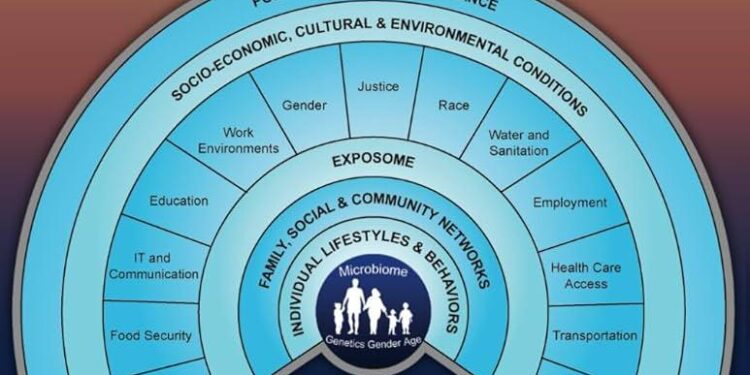A groundbreaking study published in Nature sheds new light on how ecological factors and hydroclimatic conditions shape the water-use strategies of vegetation across diverse ecosystems. As climate change intensifies droughts and alters rainfall patterns worldwide, understanding how plants adapt their water consumption is crucial for predicting ecosystem resilience and managing water resources. This research combines cutting-edge field data and advanced modeling to reveal the complex interplay between environmental drivers and plant physiology, offering fresh insights into the survival tactics of vegetation under shifting climatic pressures.
Ecological Drivers Shaping Vegetation Water-Use in Diverse Landscapes
Vegetation water-use strategies across varying landscapes are fundamentally influenced by a complex interplay of ecological factors that determine how plants adapt to their surroundings. Key among these are soil properties, such as texture and moisture retention capacity, which directly affect root water uptake efficiency. Concurrently, species-specific physiological traits – including stomatal conductance and leaf morphology – modulate transpiration rates, enabling plants to finely tune water use in response to environmental constraints. This dynamic interaction supports a spectrum of adaptive strategies, from drought avoidance to water-saving mechanisms, intricately woven into the fabric of diverse ecosystems.
Hydroclimatic conditions further shape these strategies by imposing temporal and spatial variability in water availability. Regions characterized by seasonal rainfall patterns or prolonged dry spells often elicit distinct adjustments in vegetation behavior, such as altered phenology or shifts in biomass allocation towards root systems. Below is a concise overview of ecological drivers and their impacts on vegetation water-use strategies:
- Soil texture: Influences water retention & nutrient availability
- Species physiology: Controls transpiration and water uptake
- Hydroclimatic variability: Governs temporal access to water
- Landscape heterogeneity: Creates microclimates affecting moisture regimes
| Ecological Driver | Primary Effect | Vegetation Response |
|---|---|---|
| Soil Moisture | Water availability | Root depth adjustment |
| Temperature | Evapotranspiration rate | Stomatal closure timing |
| Rainfall Pattern | Seasonal water supply | Growth cycle shift |
| Topography | Microclimate formation | Differential species distribution |
Hydroclimatic Patterns Reveal Critical Influences on Plant Hydration Strategies
Emerging research illustrates the profound connection between regional hydroclimatic trends and the adaptive mechanisms plants employ to manage water. Variability in rainfall patterns, soil moisture availability, and atmospheric demand directly informs how vegetation optimizes water uptake and conserves resources during periods of stress. Notably, species in arid zones demonstrate enhanced root plasticity and deeper water foraging, while those in wetter regions invest more in transpiration efficiency to capitalize on abundant water supplies. These differing strategies not only shape plant survival but also influence ecosystem resilience amid shifting climate scenarios.
Key hydroclimatic factors driving plant water-use adaptations include:
- Seasonality and intensity of precipitation
- Frequency of drought events
- Temperature-related evaporation rates
- Soil water-holding capacity
| Hydroclimatic Variable | Typical Plant Adaptation | Ecological Impact |
|---|---|---|
| Low Precipitation | Deep root systems | Improved drought tolerance |
| High Evapotranspiration | Reduced leaf area | Decreased water loss |
| Frequent Seasonal Floods | Enhanced water storage tissues | Flood resilience |
| Variable Soil Moisture | Plastic stomatal control | Optimized gas exchange |
Leveraging Insights to Enhance Sustainable Water Management in Ecosystems
Recent research into the ecological and hydroclimatic factors shaping vegetation water-use strategies offers critical pathways for improving water sustainability in ecosystems. By dissecting how different plant communities respond to variations in soil moisture, rainfall patterns, and atmospheric demand, scientists are able to identify adaptive traits that optimize water use. These insights enable resource managers to move beyond a one-size-fits-all approach, tailoring conservation efforts to species-specific and site-specific water dynamics. In particular, recognizing the variability in root depth, stomatal regulation, and leaf morphology across ecosystems allows for better predictions of vegetation resilience under changing climatic conditions.
Implementing these findings in sustainable water management creates several actionable benefits:
- Enhanced drought preparedness: Aligning planting strategies with species that exhibit efficient water regulation under hydroclimatic stress.
- Improved irrigation efficiency: Leveraging knowledge of vegetation water-use to optimize timing and volume of water applications.
- Restoration success: Selecting native vegetation with water-use traits that support long-term ecosystem recovery and stability.
| Vegetation Type | Water-Use Strategy | Hydroclimatic Adaptation |
|---|---|---|
| Deciduous Forest | Deep-rooted, moderate transpiration | Seasonal moisture uptake |
| Grassland | Shallow roots, fast response | Rapid adjustment to rainfall pulses |
| Savanna | Mixed deep and shallow roots | Adaptive to fluctuating dry-wet cycles |
In Retrospect
As climate variability continues to reshape ecosystems worldwide, understanding the ecological and hydroclimatic factors that govern vegetation water-use strategies becomes ever more critical. This study sheds new light on how plants adapt to their environments, offering valuable insights for predicting vegetation responses under shifting climate scenarios. By unraveling these complex interactions, researchers pave the way for more informed conservation efforts and sustainable land management practices in a changing world.




















![Forest ecology cannot be reduced to arithmetic, says M.I. Varghese [Interview] – Mongabay-India](https://earth-news.info/wp-content/uploads/2025/12/328946-forest-ecology-cannot-be-reduced-to-arithmetic-says-mi-varghese-interview-mongabay-india-350x250.jpg)










![Forest ecology cannot be reduced to arithmetic, says M.I. Varghese [Interview] – Mongabay-India](https://earth-news.info/wp-content/uploads/2025/12/328946-forest-ecology-cannot-be-reduced-to-arithmetic-says-mi-varghese-interview-mongabay-india-120x86.jpg)